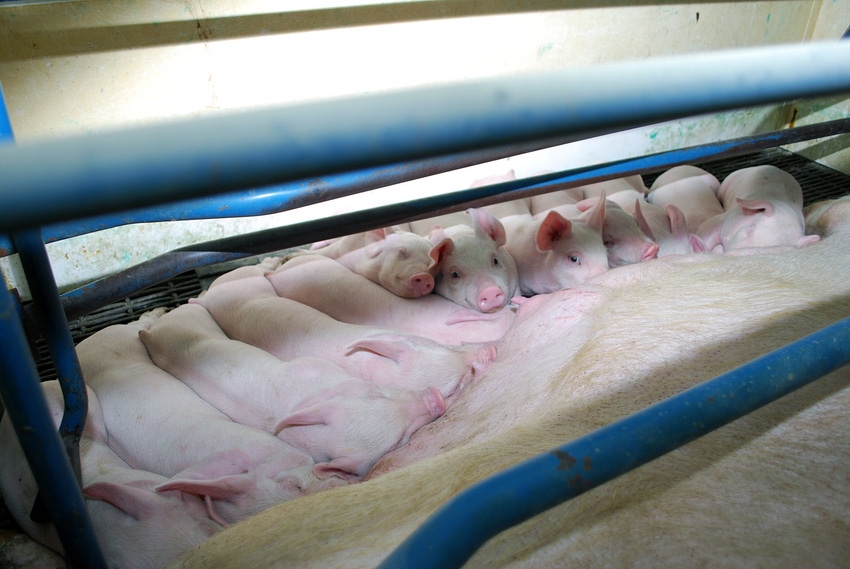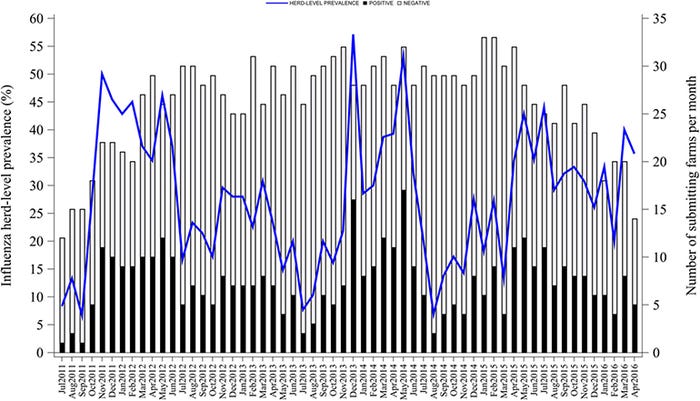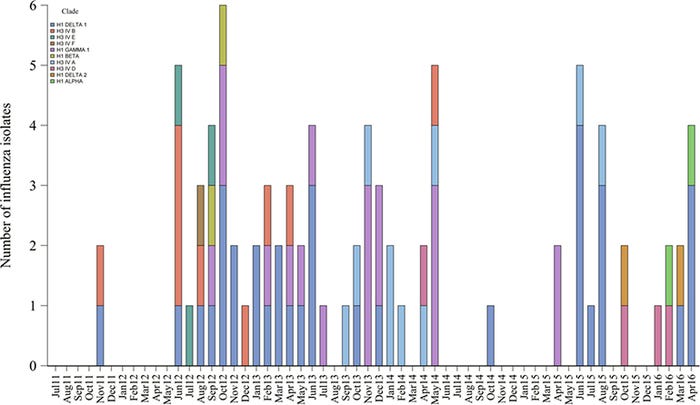Research Review: Study showed that influenza had a cyclical pattern explained in part by air absolute humidity and temperature changes over time.
December 13, 2017

Researchers: Fabian Chamba, Ana Alba-Casals, the late-Bob Morrison, Montse Torremorell, University of Minnesota Veterinary Population Medicine Department, St. Paul, Minn.; Joel Nerem, Pipestone Veterinary Services, Pipestone, Minn.; and Pedro Puig, Universitat Autònoma de Barcelona, Cerdanyola del Vallès Departament de Matemàtiques, Barcelona, Spain
Influenza is a costly disease for pig producers and understanding its epidemiology is critical to control it. In this study, we estimated the herd-level prevalence and seasonality of influenza in breeding herds, evaluated the correlation between influenza herd-level prevalence and meteorological conditions, and characterized the influenza genetic diversity over time.
Thirty-four breeding herds that had been monitored for influenza in piglets prior to wean for over a five-year period were selected. A farm was considered positive in a given month if at least one oral fluid tested influenza-positive by RT-PCR, and data was used to assess seasonality using statistical methods. Meteorological conditions were also gathered from land-based weather stations and correlated with influenza herd-level prevalence.

Influenza herd-level prevalence had a median of 28% and ranged between 7% and 57% following a cyclical pattern with levels increasing during fall, peaking in both early winter (December) and late-spring (May), and decreasing in summer. Interestingly seasonality was documented in the piglet population even though piglets are born year around in mechanically controlled environments.
In order to determine whether environmental factors played a role at explaining such seasonality, we documented that both ambient temperature and absolute humidity are partly responsible for the trends observed in seasonality and were both correlated with herd-level prevalence.
Influenza genetic diversity was substantial over time with influenza isolates belonging to 10 distinct clades from which H1 delta 1 and H1 gamma 1 were the most common. Twenty-one percent of farms had three different clades co-circulating over time, 18% of farms had two clades, and 41% of farms had one clade.

In summary, our study showed that influenza had a cyclical pattern explained in part by air absolute humidity and temperature changes over time, and highlighted the importance of active surveillance to identify high-risk periods when strategic control measures for influenza could be implemented.
This information can be helpful to producers in order to decide which strains to include in the influenza vaccines, and how and when to vaccinate against influenza in breeding herds.
For more information, contact Torremorell at 612-625-1233. This study was supported by the Minnesota Rapid Agriculture Response Fund.
You May Also Like



